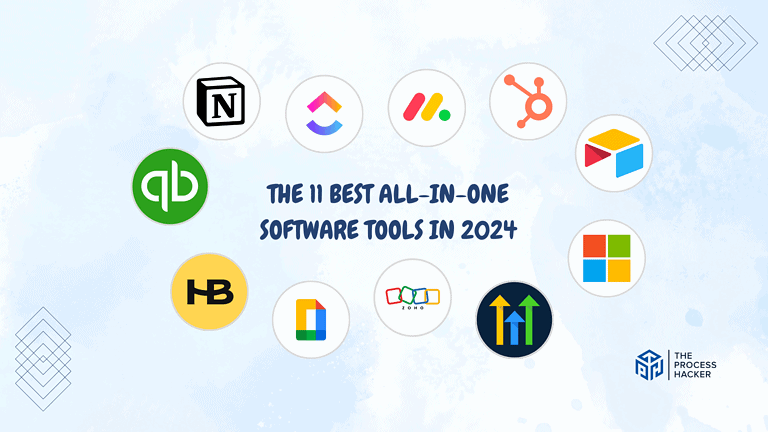Unlocking SEO Success: How to Optimize Your Website
Did you know that the first five organic results account for over 67% of all clicks? That’s a huge chunk of potential visitors you could miss out on!
SEO, or Search Engine Optimization, is the key to making your website visible to search engines like Google. By optimizing your website, you can climb the search engine rankings, attract more organic traffic, and ultimately achieve your online objectives.
The truth is that simply having a website isn’t enough. To attract visitors and achieve your online goals, you need to unlock the power of SEO.
This comprehensive guide will explore proven strategies for optimizing your website for success. From keyword research and on-page web optimization to technical SEO and link building, we’ll equip you with the knowledge and tools to conquer the search engine rankings and drive targeted traffic to your website.
What is Website Optimization?
Think of your website as a storefront on a bustling city street. Just like a physical store needs an eye-catching display, clear signage, and easy access to attract customers, your website needs to be optimized to attract visitors and encourage them to explore.
Website optimization is fine-tuning your online presence to improve its visibility and performance in search engine results. It’s about ensuring the right people easily find your website – those actively searching for the information, products, or services you offer.
Why is this crucial, especially for small businesses and entrepreneurs? Because in today’s digital age, your website is often the first impression you make. A well-optimized website can level the playing field, allowing you to compete with larger companies and attract a steady stream of potential customers.
Effective website optimization involves a multi-faceted approach. Here are the key components that should be on your SEO checklist:
- Technical SEO: This ensures search engines easily crawl and index your website. Think of it as building a strong foundation for your online presence.
- On-Page Optimization: This focuses on optimizing the content and structure of individual web pages. Imagine this as crafting a compelling story that resonates with both visitors and search engines.
- Off-Page Optimization: This involves building your website’s authority and reputation through external links and social signals. Consider it digital word-of-mouth marketing.
- Content Marketing: Creating high-quality, valuable content that addresses the needs and interests of your target audience. Think of it as providing useful information that establishes you as a trusted resource.
Focusing on these critical components can create a website that ranks well in search results and provides visitors with a positive and engaging experience.
Why You Should Optimize Your Website
Now, you might wonder, “Why should I invest time and effort in optimizing my website?” The answer is simple: it offers many benefits that can significantly impact your online success.
Reason #1: Dominate Search Results
When you optimize your website, you increase its visibility in search engine results pages (SERPs). This means that when potential customers search for relevant keywords, your website is more likely to appear at the top of the rankings, making it easier for them to find you.
Reason #2: Attract the Right Crowd
SEO helps you attract highly targeted traffic—people actively searching for what you have to offer. This translates to higher-quality leads and increased conversions, as you’re reaching an audience that is genuinely interested in your products or services.
Reason #3: Keep Visitors Engaged
A well-optimized website provides a seamless and enjoyable user experience. By optimizing your website’s structure, navigation, and content, you can encourage visitors to stay longer, explore more pages, and ultimately take desired actions.
Reason #4: Maximize Your Investment
Compared to paid advertising, SEO offers a higher return on investment (ROI) in the long run. While paid advertising can quickly boost traffic, organic traffic from SEO is sustainable and continues to grow over time, providing lasting results without ongoing costs.
In essence, website optimization is a strategic investment that pays off in increased visibility, higher-quality traffic, improved user engagement, and a stronger online presence.
How to Optimize Your Website for SEO Success
Ready to roll up your sleeves and get your website in top shape for search engines? Optimizing your website for SEO involves a strategic approach that combines various elements. Let’s break down the key steps to achieve SEO success.
1. Conduct Thorough Keyword Research
Keywords are the foundation of SEO. They are the words and phrases people use when searching for information online. To optimize your website effectively, you need to understand what your target audience is searching for and incorporate those keywords strategically into your content.
- Find Your Keywords: Start by brainstorming relevant keywords related to your business, products, or services. Think like your customers – what words would they use to find you?
- Utilize Keyword Tools: Leverage powerful keyword research tools like Google Keyword Planner and SEMrush to discover valuable keyword data. These tools can help you identify high-volume keywords, assess their competition, and uncover related terms.
- Target Long-Tail Keywords: Don’t just focus on broad keywords. Long-tail keywords, which are longer and more specific phrases, often have less competition and can attract highly targeted traffic.
- Understand User Intent: Consider the intent behind the keywords. Are people looking for information, products to buy, or a specific service? Align your content with the user’s search intent to provide relevant and valuable information.
By conducting thorough keyword research, you can gain valuable insights into your target audience’s search behavior and optimize your website to attract the right visitors.
2. Optimize On-Page Elements
Think of on-page optimization as dressing up your website for a first date. You want to make a great impression and show your best self. This involves fine-tuning various elements on your web pages to make them user-friendly and search engine-friendly.
- Write Captivating Titles and Descriptions: Your page title and meta description are like a first impression – they appear in search results and entice users to click. Craft compelling titles that accurately reflect your content and write concise, informative meta descriptions that encourage clicks.
- Structure with Header Tags: Use header tags (H1, H2, H3, etc.) to organize your content hierarchically. This makes your content easier to read and helps search engines understand the structure and relevance of your information.
- Incorporate Keywords Naturally: Sprinkle relevant keywords throughout your content, but avoid keyword stuffing. Focus on creating valuable, informative content that reads naturally and provides a positive user experience.
- Optimize Images: Don’t forget about your images! Optimize image alt text and file names with relevant keywords. This helps search engines understand the context of your images and improves your website’s accessibility.
By optimizing these on-page elements, you can create web pages that are both informative and engaging, signaling to search engines that your content is relevant and valuable.
3. Create High-Quality, Relevant Content
Content is king in the world of SEO. To optimize your website, create content that satisfies search engines and your audience. Develop a content strategy aligned with your ideal visitor’s needs and interests. What are their questions? What problems do they have? Address these to establish yourself as a trusted resource.
Focus on creating in-depth, authoritative content that provides valuable insights. Think comprehensive guides and insightful articles. Incorporate semantic keywords – related terms and phrases that add context and depth. Consider implementing content clustering and pillar pages.
Create a central “pillar page” covering a broad topic and linking to related “cluster pages” that delve into specific subtopics. This will organize your content and strengthen your website’s internal linking structure.
4. Improve Website Structure and Navigation
Imagine walking into a store with no clear aisles, misplaced products, and confusing signage. You’d likely get frustrated and leave, right? The same applies to your website. A clear and organized website structure is essential for both user experience and SEO. Create a logical site hierarchy that makes it easy for visitors to find what they’re looking for. Think of it as creating a roadmap for your website.
Use clear and descriptive URLs that reflect the content of each page. This not only helps users understand where they are on your site but also provides valuable information to search engines. Implement internal linking to connect related content and guide visitors through your website. Think of it as creating pathways that connect different sections of your store.
Finally, create and submit an XML sitemap to search engines. This sitemap acts as a blueprint of your website, making it easier for search engines to crawl and index your pages.
5. Enhance Website Performance and Speed
Nobody has time to wait for a slow website to load these days. Website speed is a critical factor for both user experience and SEO. Search engines prioritize websites that load quickly, as they provide a better user experience.
To enhance your website’s performance, start by optimizing your images. Compress image file sizes without sacrificing quality and implement lazy loading, which delays the loading of images until they are visible on the screen.
Minify your CSS, JavaScript, and HTML code to reduce file sizes and improve loading times. Think of it as streamlining the behind-the-scenes code that powers your website. You can also leverage browser caching to store website data on the user’s browser, allowing for faster loading on subsequent visits.
Finally, consider using a content delivery network (CDN) to distribute your website’s content across multiple servers worldwide. This ensures visitors can access your website quickly, regardless of location.
6. Ensure Mobile-Friendliness
It’s a mobile-first world, and your website needs to be ready. This means it should adapt seamlessly to any screen size, providing an optimal viewing experience on all devices. Implement responsive design using flexible layouts, images, and CSS media queries to achieve this.
Don’t assume your site works flawlessly on all devices just because it looks good on yours. Test it on smartphones and tablets with different operating systems and browsers to identify and address any display or functionality issues.
Mobile users expect fast loading times. Optimize your website’s performance by optimizing images, leveraging browser caching, and minimizing HTTP requests. Use website optimization tools like Google’s PageSpeed Insights to analyze your site’s speed and find areas for improvement.
Keep in mind that Google now uses the mobile devices version of your site for indexing and ranking. This is known as mobile-first indexing. Ensure your mobile site has the same content and structured data as your desktop site to maintain your search engine rankings.
7. Implement Technical SEO Best Practices
Technical SEO can be a bit behind the scenes, but it’s crucial for search engines to find, crawl, and understand your website. Here’s a table summarizing some key best practices:
| Practice | Why it Matters | How to Implement |
| Fix broken links and redirect errors | Broken links frustrate users and hurt your SEO. Redirects ensure users and search engines land on the right page. | Use a website crawler (like Screaming Frog) to identify broken links (404 errors) and incorrect redirects. Implement 301 redirects for permanent moves. |
| Use HTTPS for secure connections | HTTPS protects user data and is a ranking signal for Google. | Install an SSL certificate on your website. |
| Implement schema markup | Schema markup helps search engines understand the content on your pages, leading to rich snippets in search results. | Add schema.org vocabulary to your website’s HTML to provide context to your content. |
| Optimize robots.txt and .htaccess files | These files control how search engines access and crawl your website. | Use robots.txt to block access to certain pages or sections. Use .htaccess to manage redirects, caching, and other server configurations. |
8. Leverage Google Search Console
Google Search Console is a powerful free tool that gives you valuable data about how your website performs in Google Search. Think of it as a direct line of communication between you and Google.
First, set up and verify your website in Google Search Console. This is essential to give Google access to your site’s data. You must verify ownership by adding a DNS record or uploading an HTML file.
Next, submit your sitemap. A sitemap is like a roadmap of your website that helps Google discover and index all your important pages. You can create an XML sitemap and submit it through Google Search Console.
Google Search Console helps you monitor and fix indexing issues. Regularly check the “Coverage” report to identify any problems that prevent Google from indexing your pages, such as 404 errors, server errors, or pages blocked by robots.txt.
Finally, use Google Search Console to analyze your search performance and user behavior. The “Performance” report shows you which keywords people use to find your site, click-through rates, and average ranking positions. This information helps you understand what’s working and what needs improvement in your SEO strategy.
9. Build High-Quality Backlinks
Backlinks are like votes of confidence from other websites. They signal to Google that your site is trustworthy and authoritative. Here’s how to build high-quality backlinks:
- Create link-worthy content: The foundation of earning backlinks is creating high-quality, informative, and engaging content that others will want to link to. Think in-depth guides, original research, stunning visuals, or interactive tools.
- Reach out to industry influencers and partners: Connect with relevant influencers and websites in your industry and let them know about your valuable content. Building relationships can lead to natural backlinks.
- Guest post on reputable websites: Contribute guest posts to other websites in your niche. This allows you to showcase your expertise and include a link back to your own site.
- Participate in relevant online communities: Engage in online forums, Q&A sites, and social media groups related to your industry. By providing helpful answers and sharing your knowledge, you can naturally attract backlinks to your website.
Remember, focus on quality over quantity when it comes to backlinks. A few links from authoritative websites are far more valuable than many links from low-quality or irrelevant sites.
10. Monitor and Analyze Your SEO Performance
SEO is an ongoing process, not a one-time task. To ensure your efforts are paying off, you need to monitor and analyze your performance constantly. Here’s how:
- Set up Google Analytics: Google Analytics is a free website performance optimization tool that provides a wealth of data about your website traffic and user behavior. It’s essential for understanding how people find and interact with your site.
- Track key metrics: Pay close attention to key metrics like organic traffic (visits from search engines), bounce rate (the percentage of website visitors who leave your site after viewing only one page), conversion rates, and time on page. These metrics provide insights into your website’s effectiveness and areas for improvement.
- Use SEO tools to monitor rankings and competitors: Tools like SEMrush and Moz can help you track your keyword rankings, analyze your competitors’ optimization strategies, and identify new opportunities.
- Regularly audit your website for optimization opportunities: Conduct periodic SEO audits to identify technical issues, on-page optimization gaps, and areas where you can improve your content and backlink profile.
By consistently monitoring and analyzing your SEO performance, you can identify what’s working and what’s not and make data-driven adjustments to improve your website’s visibility and achieve your online goals.
Key Considerations for Successfully Optimizing Your Website
While the technical aspects of SEO are important, there are broader considerations to keep in mind for long-term success:
- Never sacrifice user experience for the sake of SEO. Google’s algorithms prioritize websites that provide a positive user experience. Focus on creating a website that is easy to navigate, informative, engaging, and visually appealing.
- Search engine algorithms are constantly evolving. To ensure your SEO strategy remains effective, stay informed about the latest updates and best practices by following industry blogs, attending webinars, and subscribing to newsletters from reputable sources.
- SEO is a marathon, not a sprint. Avoid shady tactics or shortcuts that may provide temporary gains but ultimately harm your website’s reputation. Instead, focus on building a sustainable SEO strategy that delivers long-term results.
- Analyze your website’s performance data regularly and be willing to adjust your SEO strategy accordingly. Track your progress, identify areas for improvement, and experiment with different approaches to optimize your results.
Taking it to the Next Level: Advanced Website Optimization Techniques
Once you have a solid foundation in place, you can explore advanced techniques to enhance your website’s performance further:
Implementing AI-powered personalization
AI can analyze user data to deliver personalized content and experiences, increasing engagement and conversions. This could involve tailoring product recommendations, displaying dynamic content, or personalizing website navigation.
Optimizing for voice search and featured snippets
With the rise of voice assistants, optimize your content to answer conversational search queries. Target long-tail keywords, use natural language, and structure your content with clear headings and concise answers to increase your chances of appearing in voice search results and featured snippets.
Leveraging user-generated content for SEO
Encourage user reviews, testimonials, and social media engagement to build trust and credibility. User-generated content can also provide fresh, relevant keywords and backlinks to boost SEO.
Exploring international SEO opportunities
If you have a global audience, consider international SEO. This involves translating your website content, using tags to indicate language variations, and optimizing for local search engines in different countries.
By implementing these advanced techniques, you can stay ahead of the curve and maximize your website’s visibility and impact in the ever-evolving digital landscape.
Alternatives to DIY Website Optimization
While you can certainly handle many aspects of website optimization yourself, sometimes it makes sense to bring in outside expertise. Here are some alternatives:
Hiring an in-house SEO specialist
If you have the resources and ongoing SEO needs, hiring a dedicated in-house SEO specialist can provide deep expertise and personalized attention to your website.
Working with an SEO agency or consultant
SEO agencies and consultants offer various services, from audits and strategy development to content creation and link building. They can provide valuable insights and a fresh perspective on your website’s optimization.
Using all-in-one SEO platforms and tools
Several platforms, such as Semrush, Ahrefs, and Moz, offer comprehensive SEO tools and features that can streamline your efforts. These platforms often include keyword research, rank tracking, site auditing, and backlink analysis capabilities.
The best approach depends on your budget, internal resources, and the complexity of your SEO needs. Consider the pros and cons of each option to determine what’s right for your business.
Final Thoughts on Website Optimization
Optimizing your website for search engines is an ongoing process that requires dedication and adaptability. By implementing the strategies we’ve outlined in this guide, you’ll be well on your way to improving your website’s visibility and attracting more potential customers. Remember, SEO is a marathon, not a sprint.
Stay consistent, monitor your progress, and be willing to adjust your approach as needed. With patience and persistence, your website will climb the search engine rankings and drive meaningful results for your business.
Ready to improve your website optimization? Implement these techniques today, and watch your online presence soar!







